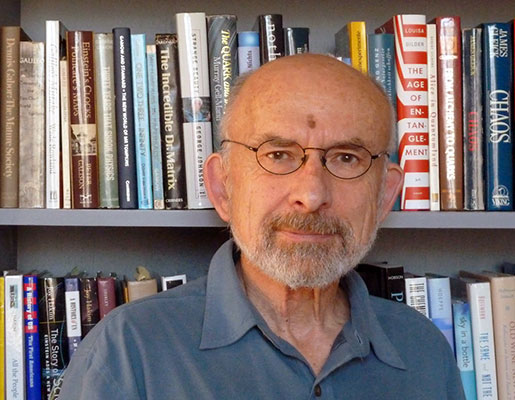Diagnosing Schrödinger’s Cat
Scientific American article explains a way to resolve quantum-state paradoxes
Hans von Baeyer says that we all can stop worrying about Schrödinger’s Cat. Science’s most famous imaginary feline may indeed be dead—or perhaps it’s alive. But it is certainly not both.
Von Baeyer wrote an article in the June 13 issue of Scientific American that proposes a way to resolve Schrödinger’s Cat and other paradoxes of quantum mechanics, a theory of matter that works well at all scales, explaining the life story of stars as well as it does the movement of subatomic particles.
Despite its successes, there are elements of quantum mechanics that even seasoned physicists have trouble getting their heads around. In his article “Can Quantum Bayesianism Fix the Paradoxes of Quantum Mechanics?,” von Baeyer notes that while quantum mechanics is the most successful theory in the physical sciences, “It is also the weirdest.”
Von Baeyer, an emeritus member of William & Mary’s Department of Physics, suggests application of a theory known as Quantum Bayesianism, or QBism, to remove the Schrödinger’s Cat-like paradoxes that arise in traditional consideration of quantum mechanics, a world in which, as he writes, “particles seem to be in two places at once, information appears to travel faster than the speed of light, and cats can be dead and alive at the same time.”
From dead and alive to dead or alive
His article revisits the famous thought experiment through which Erwin Schrödinger sought to explain the odd nature of the quantum state. Schrödinger posited a sealed box containing a live cat, a bit of radioactive material and a vial of poison under a mechanism with a hammer on the business end. The nature of the radioactive material gives it a 50-50 chance of decaying in an hour’s time. The atomic decay triggers the mechanism, causing the hammer to smash the vial of poison, killing the cat.
The weird part is this: As long as the box is sealed, you have to consider the cat to be both dead and alive. That’s what life is like in the quantum state—at least according to classical interpretation of quantum mechanics. As long as a particle has an even chance of being in one state or another, you have to consider it to be in both states at once.
QBism does away with such head-shaking weirdness, von Baeyer writes, by dealing with the “wave function,” a mathematical expression of objects in the quantum state. Traditional explanations treat the wave function as a real property of the object. By contrast, QBism, he explains, treats the wave function as a mathematical tool and nothing more.
Simply remove the wave function
Under QBism, the wave function has no bearing on the reality of the object being studied, just as the long-division problem to calculate your car’s fuel consumption has no effect on the gas mileage. Remove the wave function, and the paradoxes and absurdities vanish, he says.
Von Baeyer’s article gives good, clear layman’s explanations of the wave function and its role in the quantum state. He also traces the development of QBism, including the theory’s roots that date back to Niels Bohr, as well as its dependence on the probability theory that is summarized by Bayes’ Law. He also outlines some of the criticisms of QBism, including troubles that arise when it is applied in larger scale phenomena.
Von Baeyer is Chancellor Professor of Physics Emeritus at William & Mary. He has won numerous awards for his science writing and has published six popular science books. He has published articles explaining aspects of science to lay audiences in numerous magazines and newspapers, including Discover, Readers Digest, The New York Times, The Boston Globe and others.
The QBism article is von Baeyer’s first contribution to Scientific American, the country’s premier science magazine for a lay audience.















